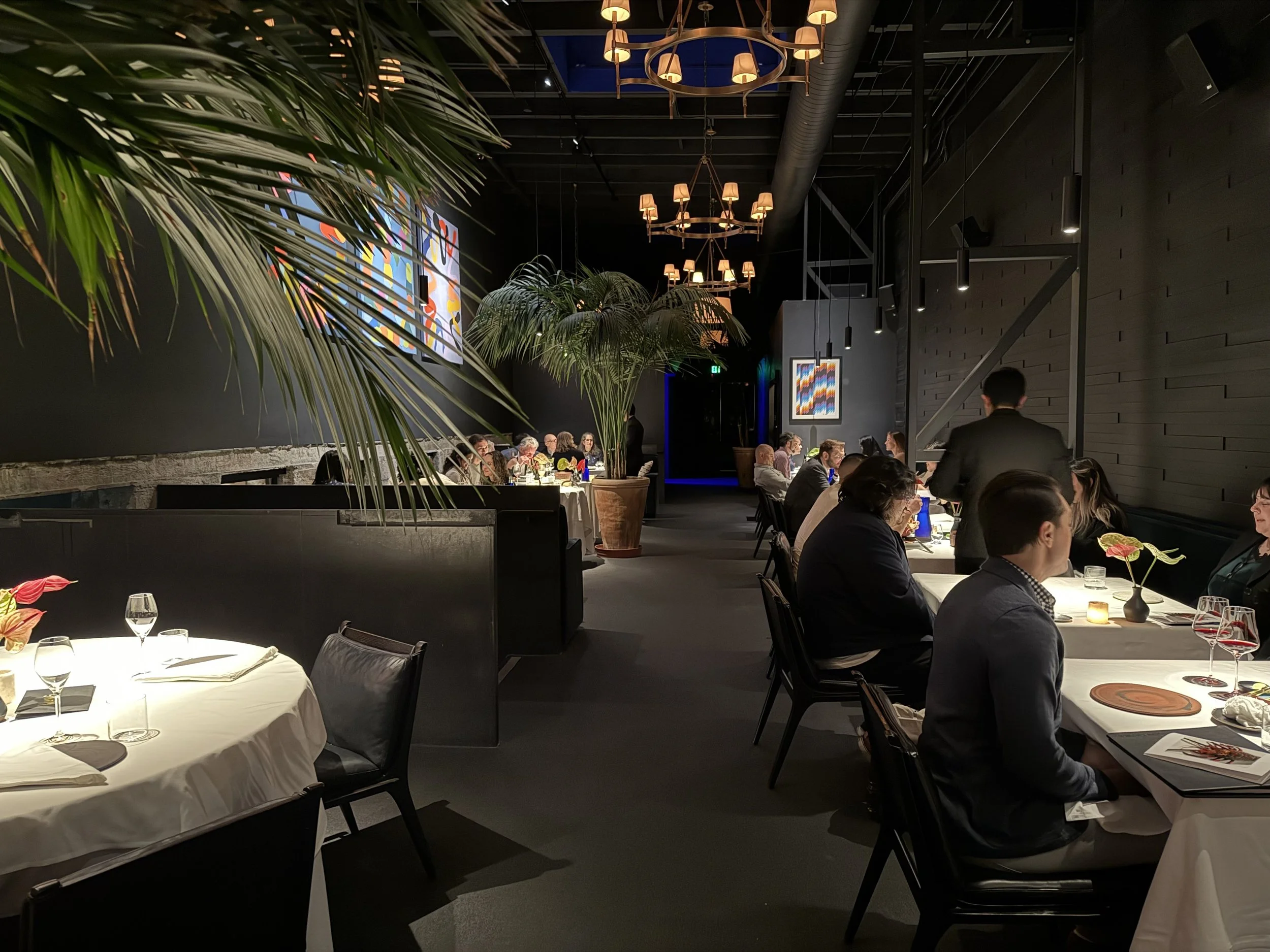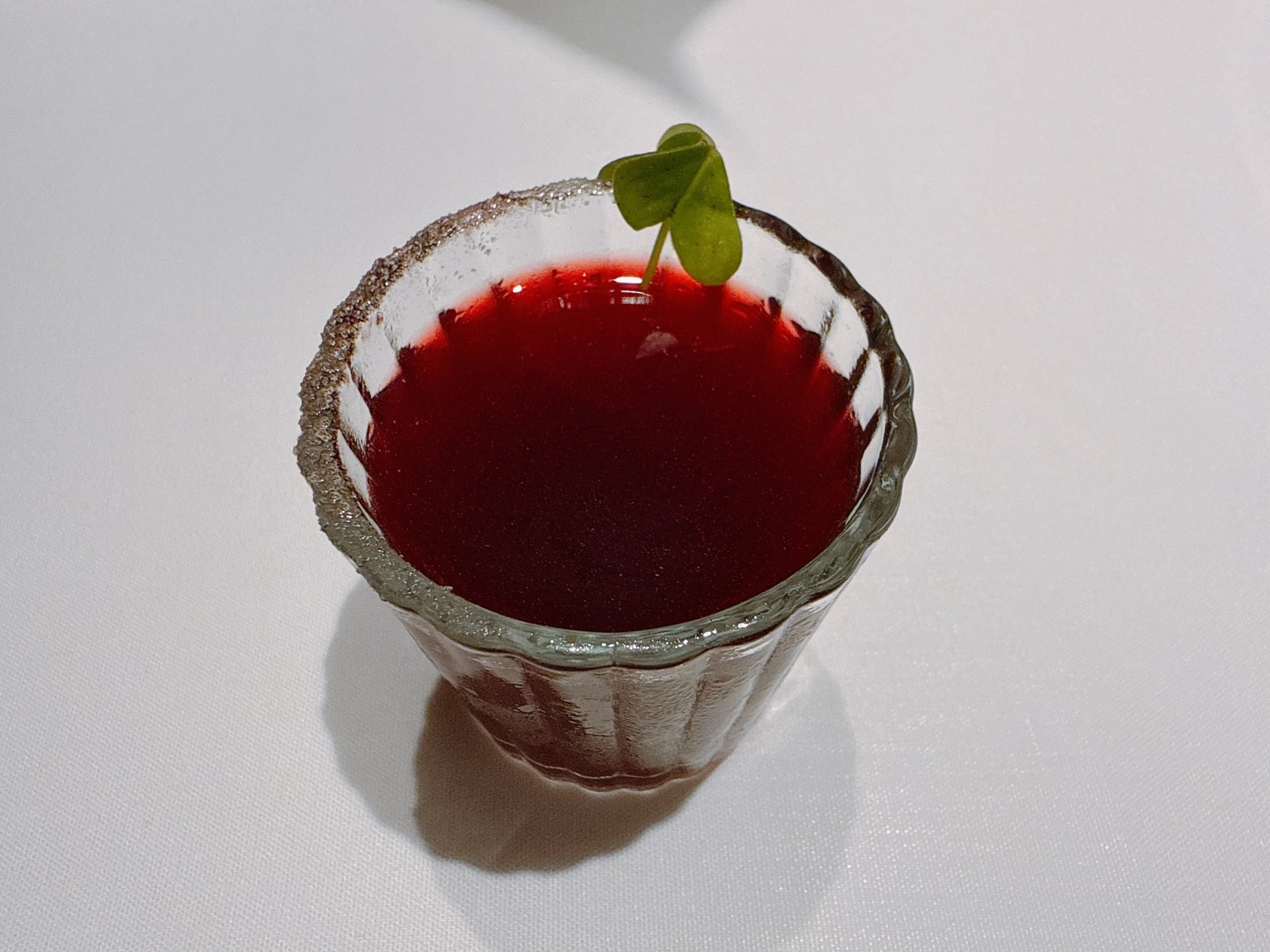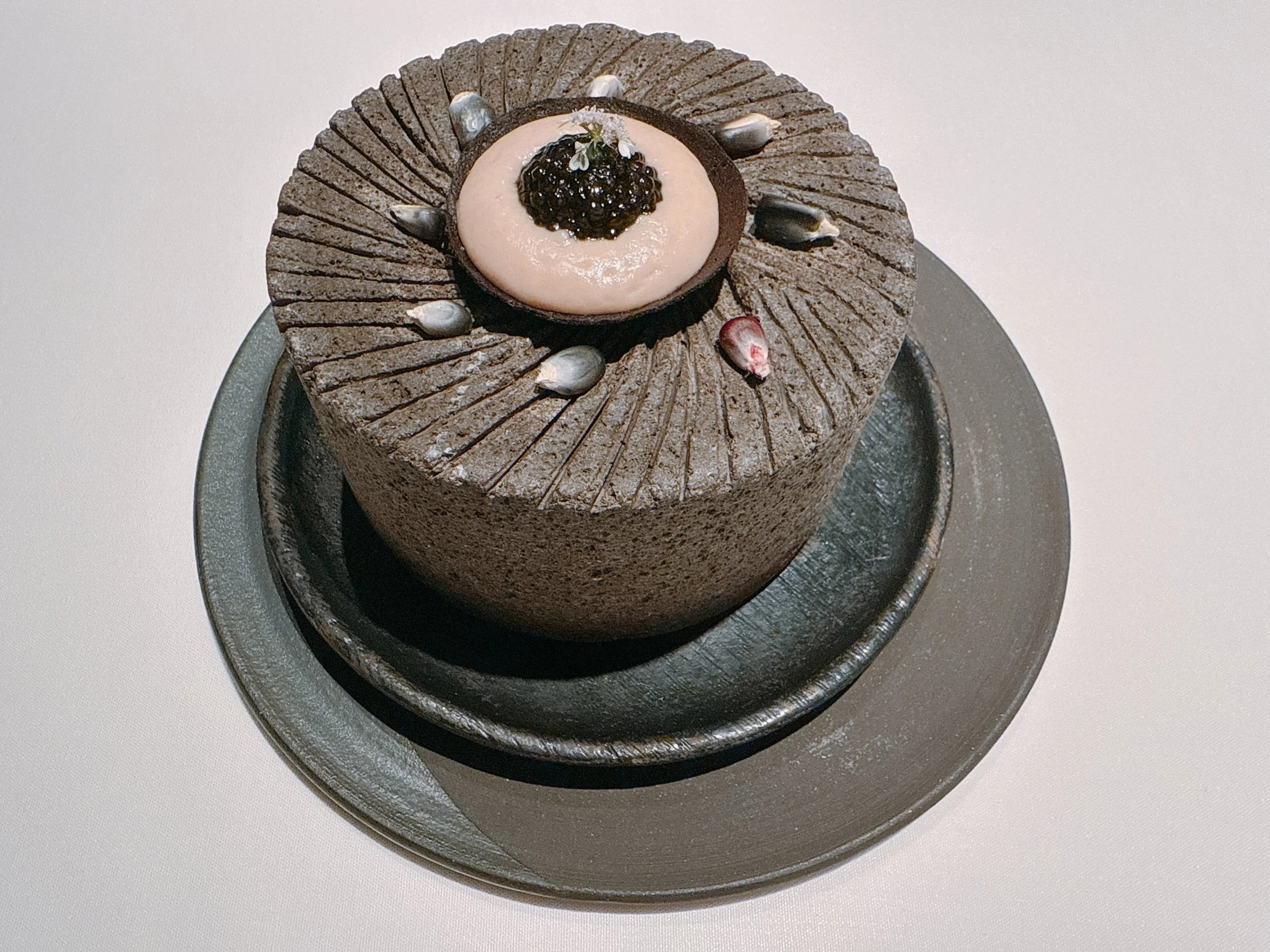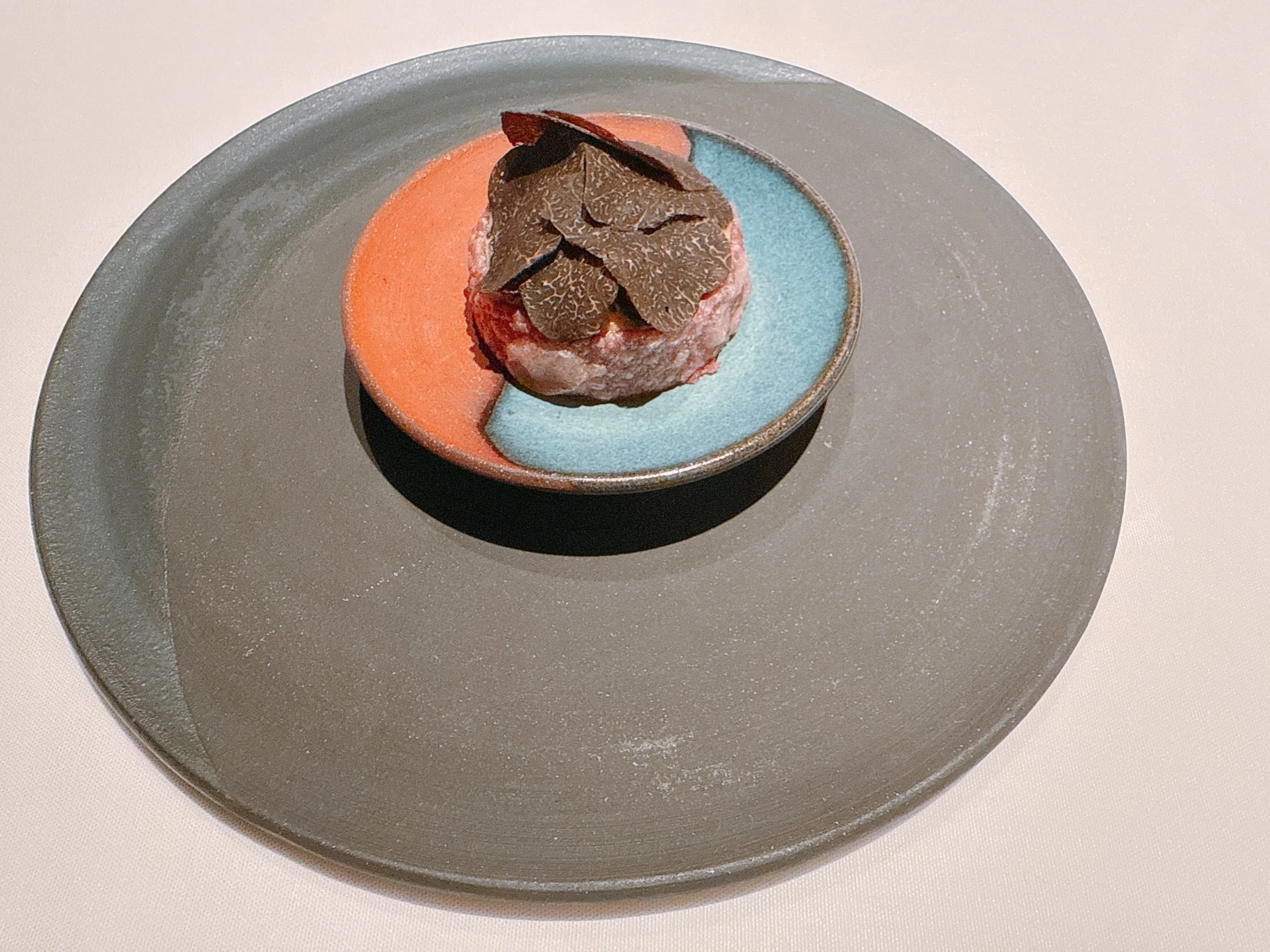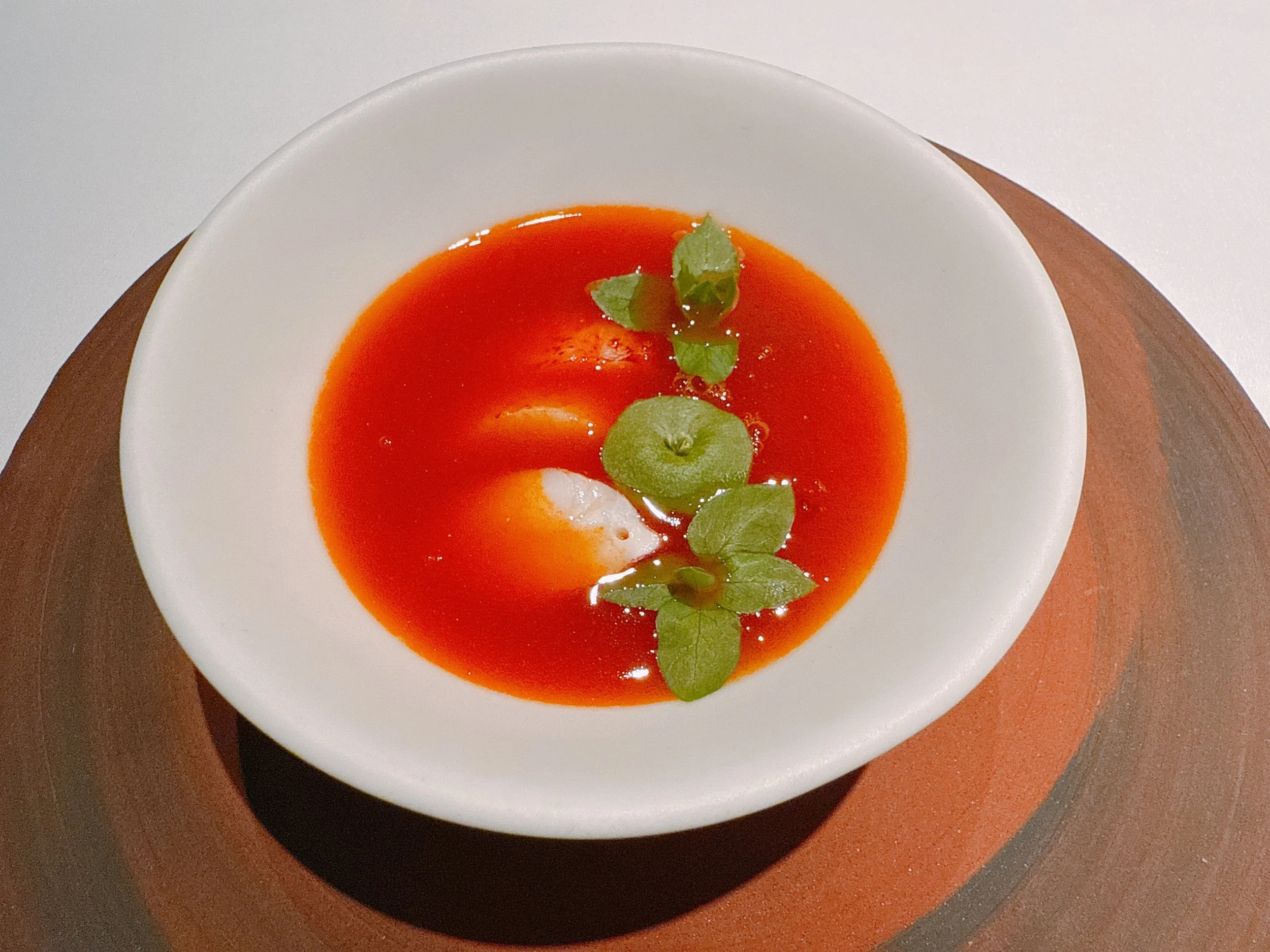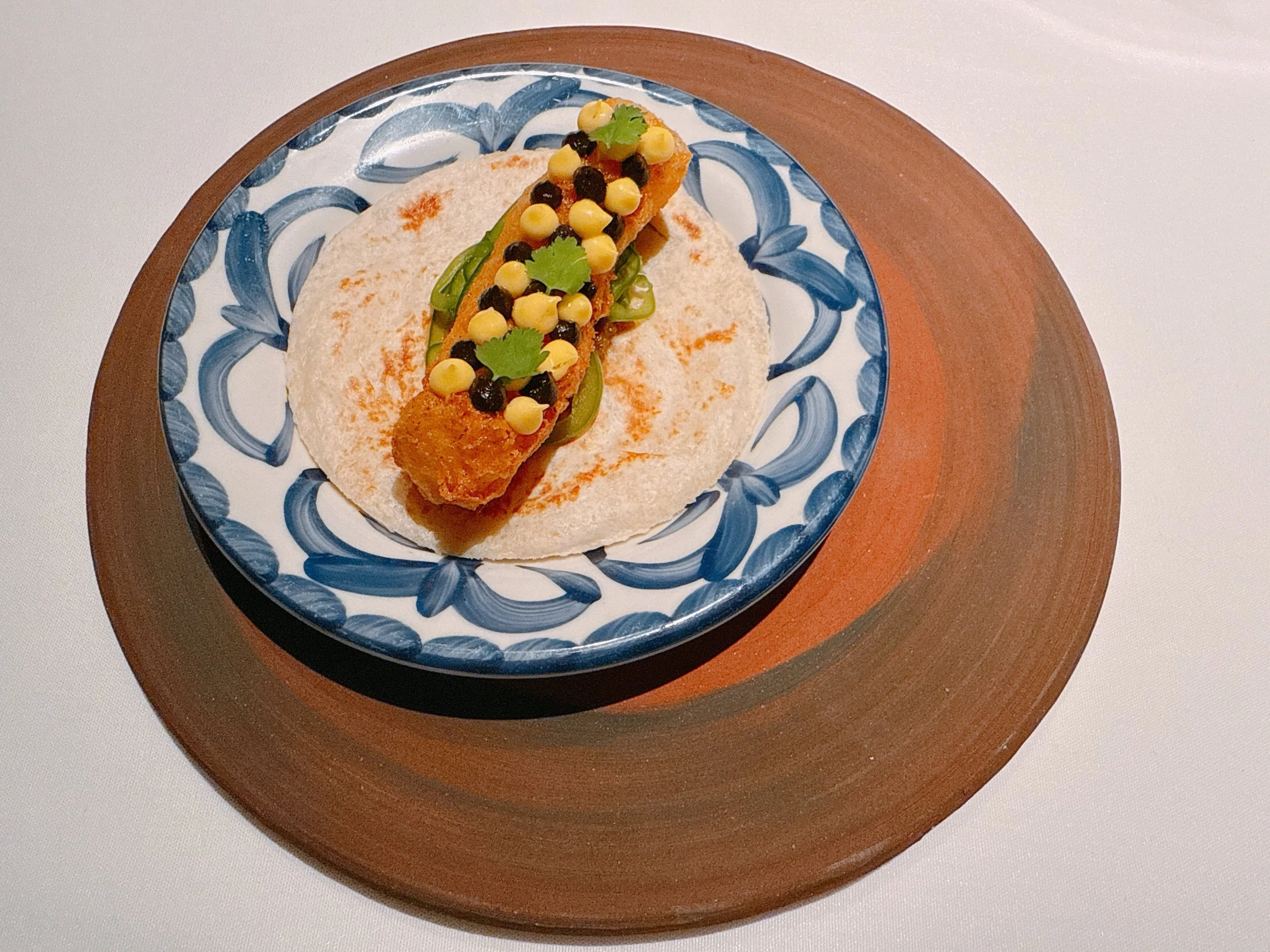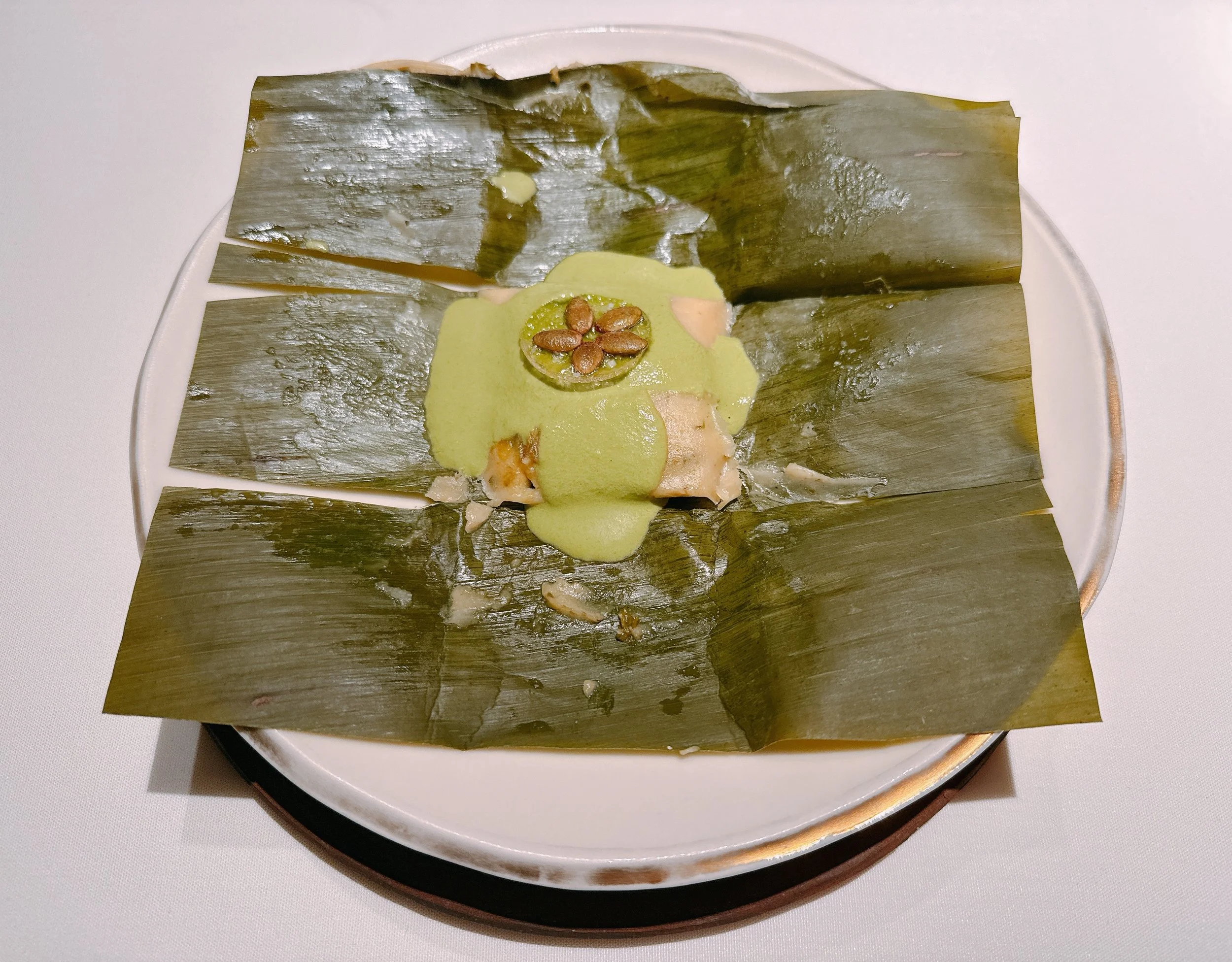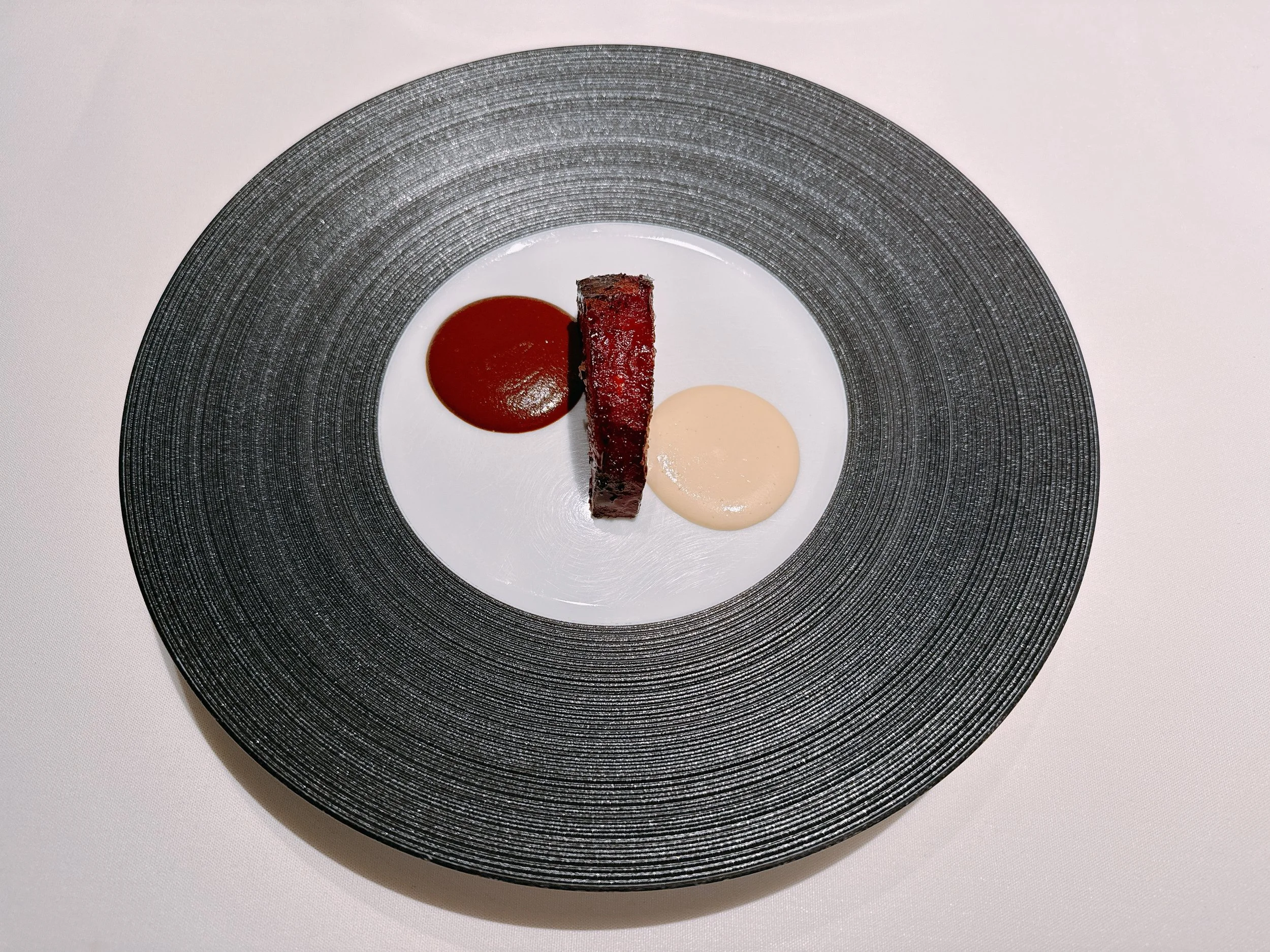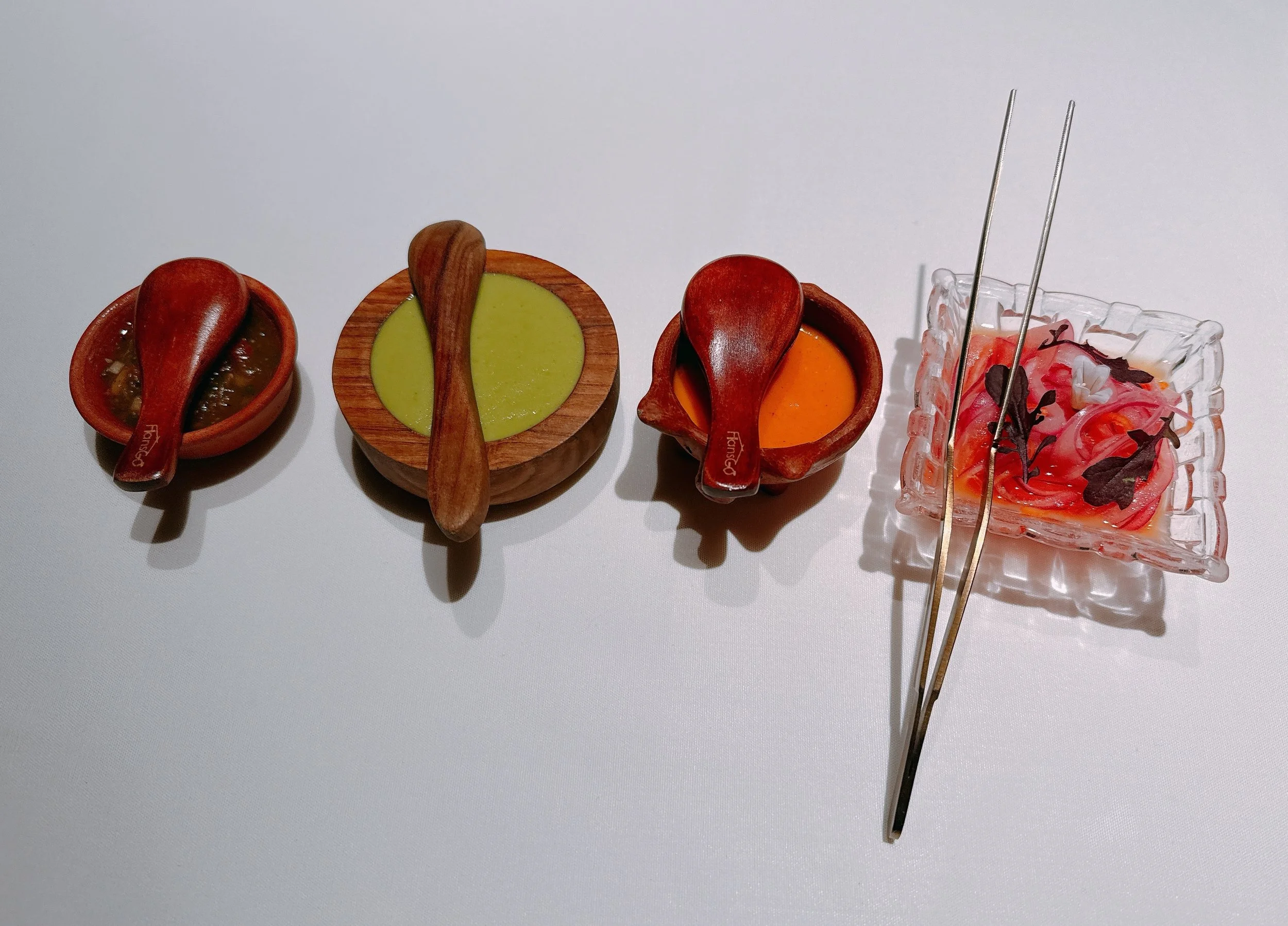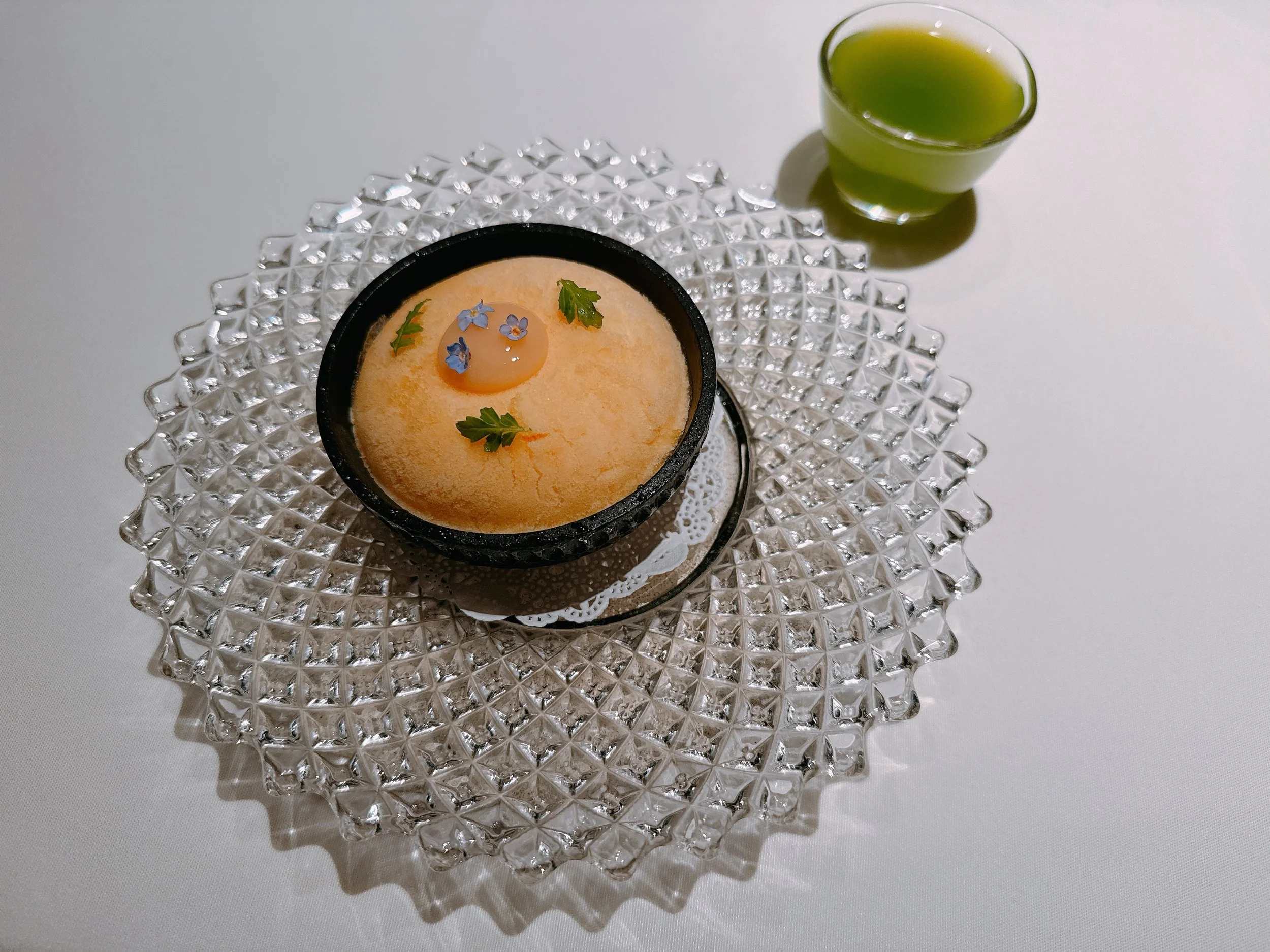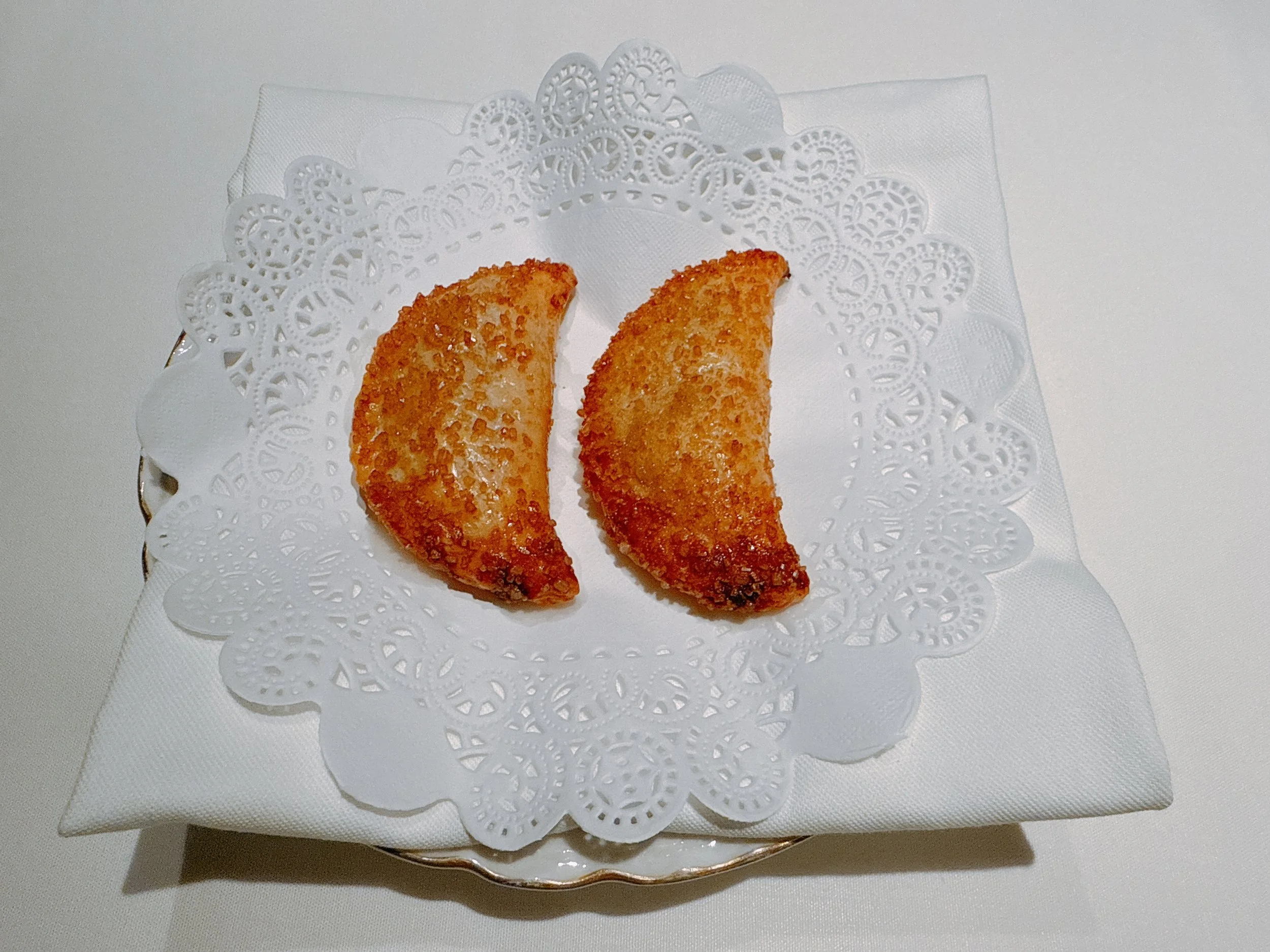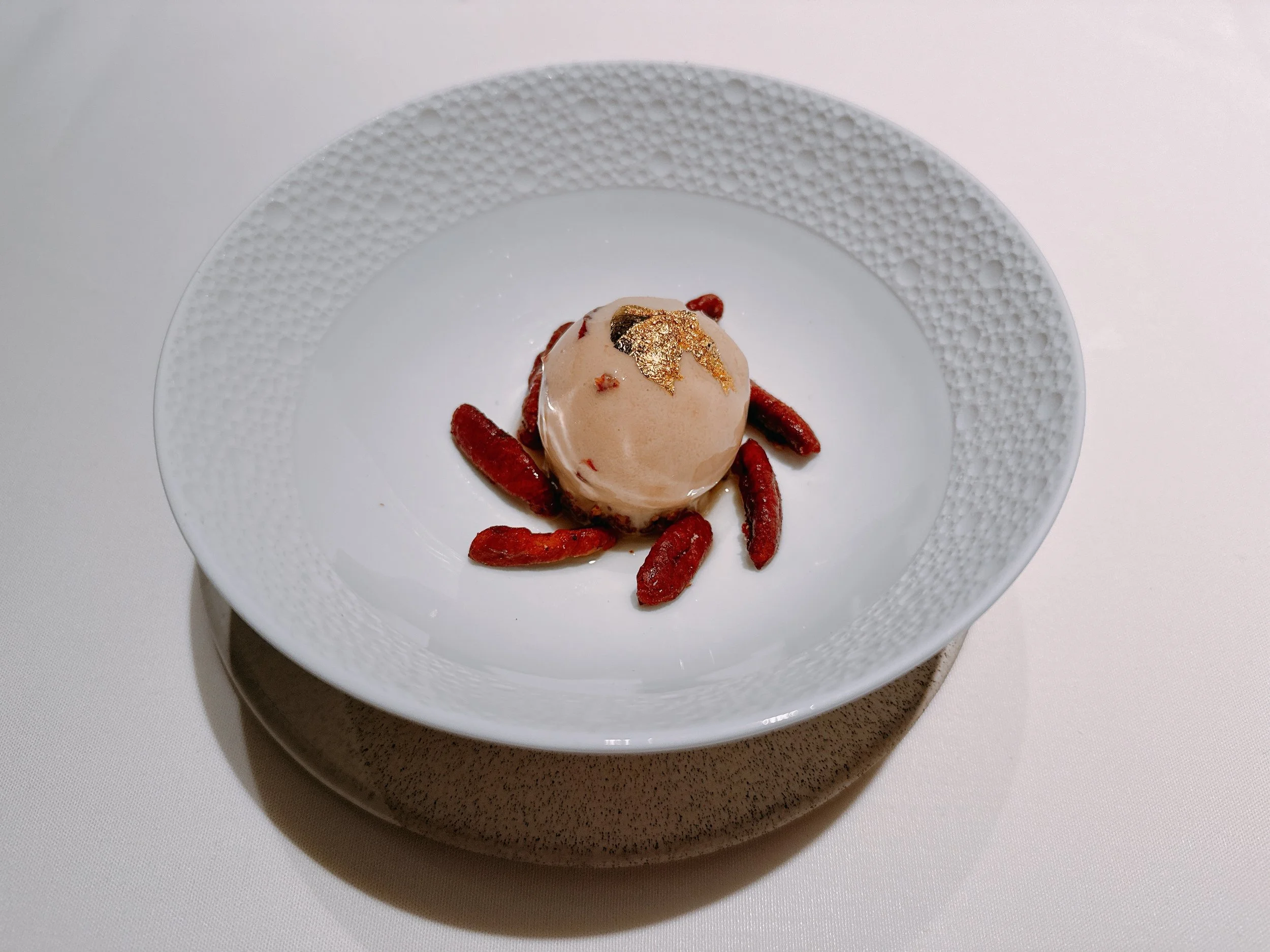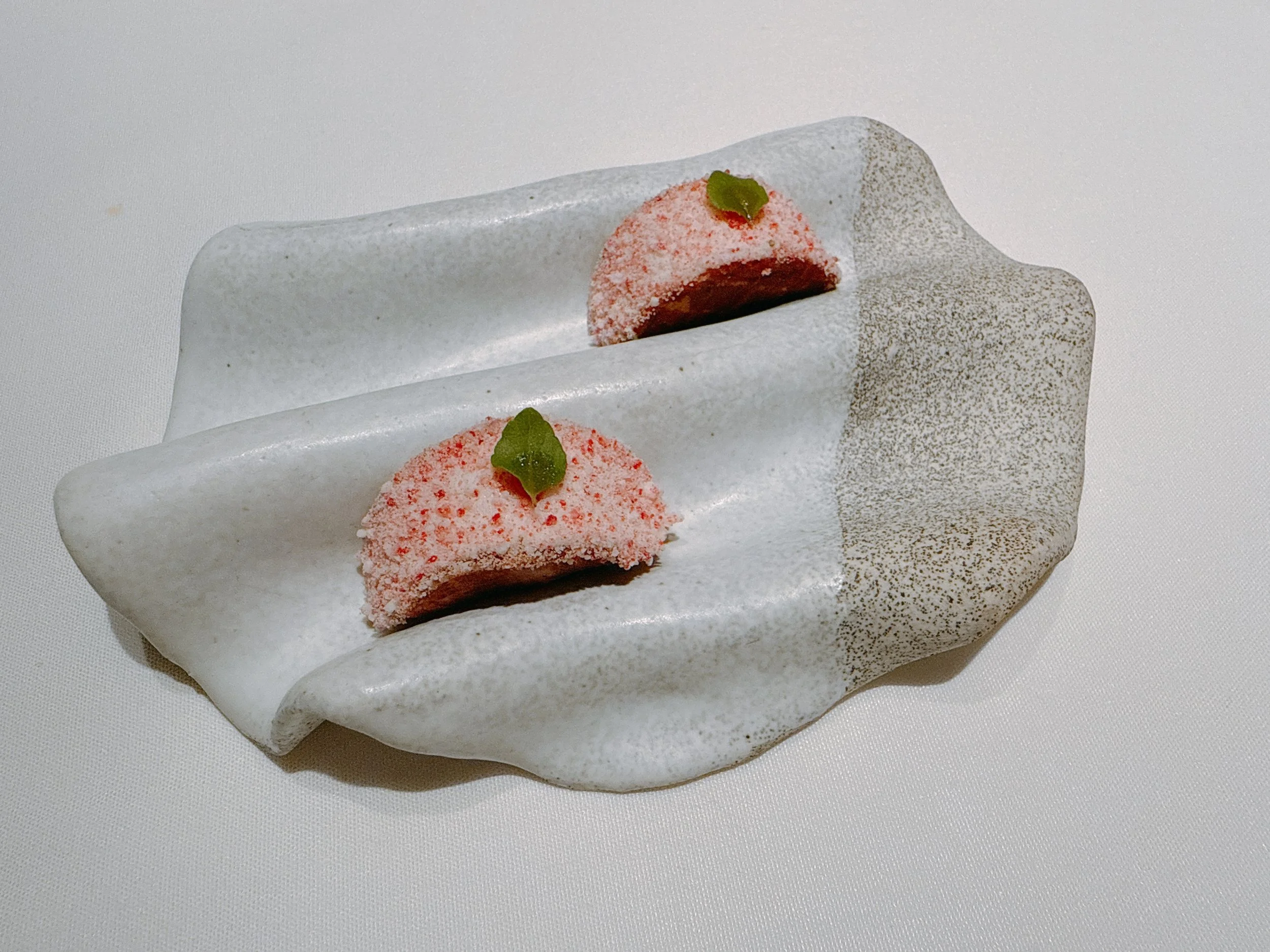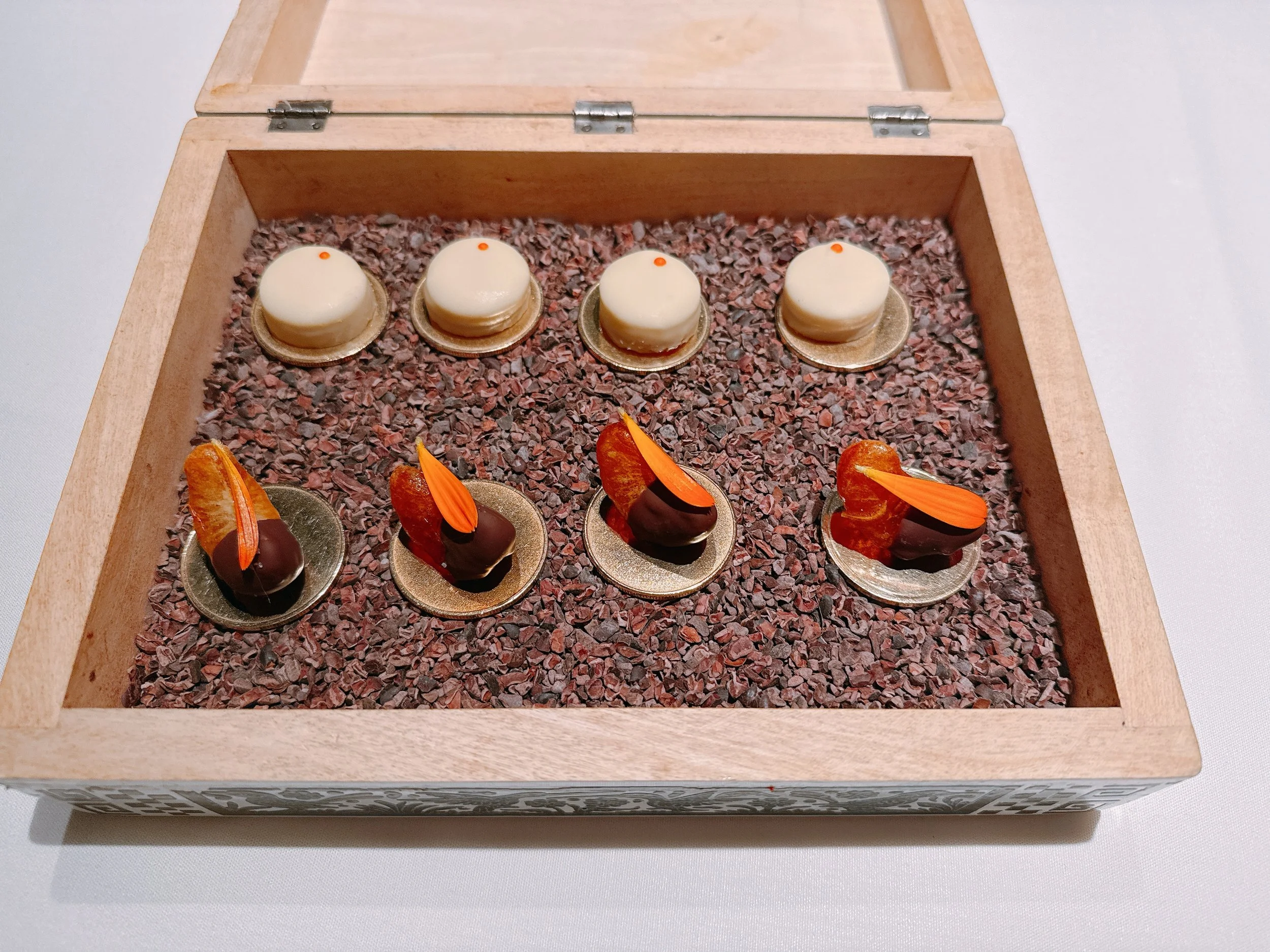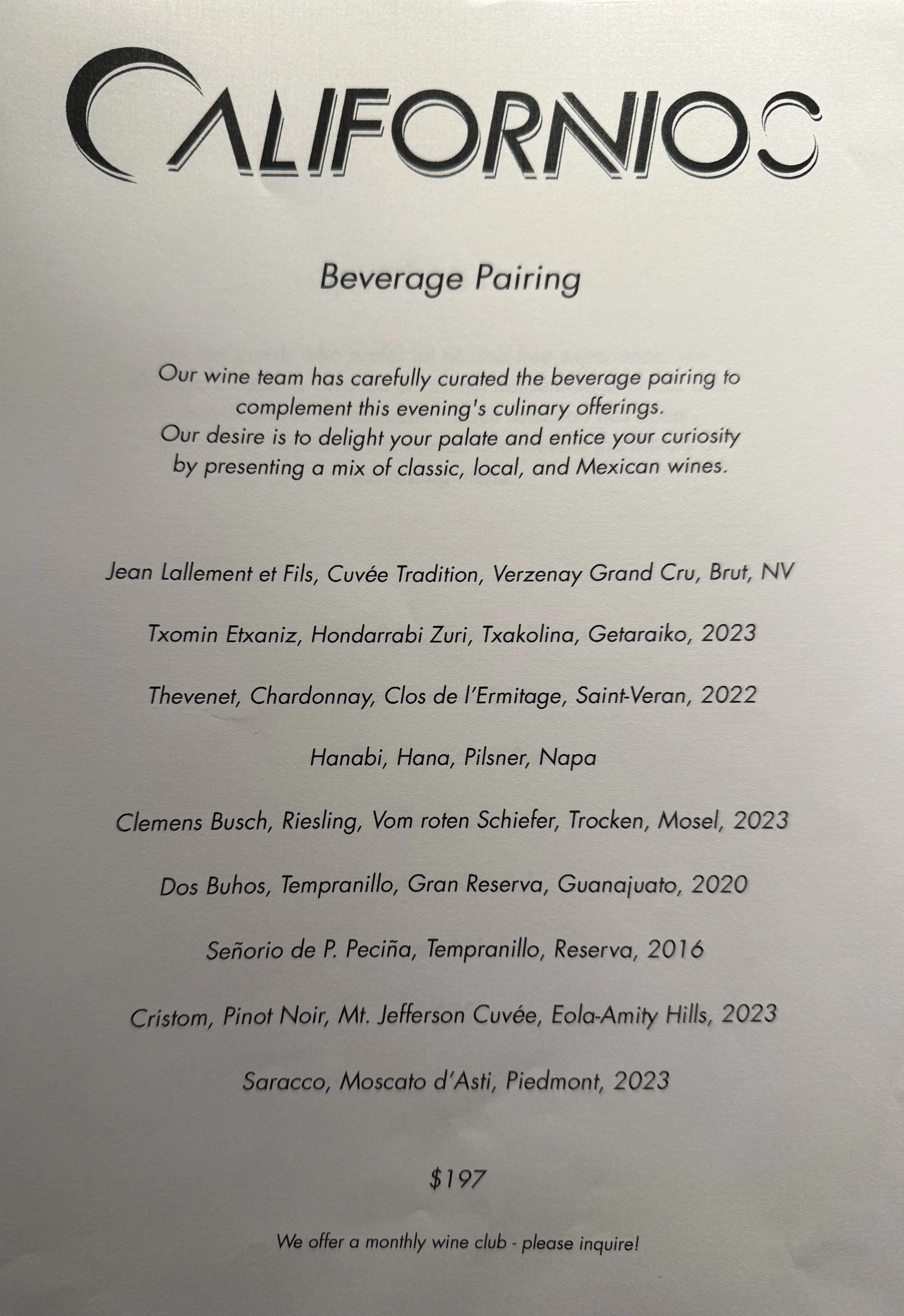Californios - San Francisco
Rating: 16/20
Where: San Francisco, CA
When: Dinner for 4 on 28 March 2025
Cost per Person: Tasting menu $325, Wine Pairing $197
Accolades: 2 Michelin Stars
Why: Mexican fine-dining cuisine with many local ingredients
“Californios” is a restaurant in San Francisco that transitioned from a pop-up to a brick-and-mortar setting about ten years ago, and has held two Michelin stars for most of that time. After originally opening in the city's Mission district, it moved to its present SOMA location after the Covid pandemic. That move also changed the restaurant's vibe - from an open kitchen surrounded by counter seating to a more traditional restaurant with a high-ceilinged, modern dining room, and an out-of-view kitchen. The restaurant's stark, black interior doesn't give any hints at what kind of food is served here, namely elevated Mexican cuisine. Californios is one of only a few restaurants outside of Mexico with Michelin stars, and the only one with two stars. As such, it is a unique San Francisco experience - something one cannot easily get elsewhere.
We last ate at Californios in June 2021 - one of our first in-person restaurant visits after the pandemic. Back then, we had dinner on the outside patio, but this time, on a chilly evening in late March, it was nice to sit inside instead. A single tasting menu was still the name of the game, with dietary restrictions not just accommodated but graced with their own printed menus. Beverage-wise, there was a wine pairing ($197), a non-alcoholic pairing ($97), and two “dueling” pairs of wines: two glasses of Sauvignon Blanc or two glasses of Nebbiolo, one wine each from a traditional growing region (Loire and Piedmont, respectively), the other from Mexico ($36 for the whites and $39 for the reds). This was an interesting way to contrast the same grape being grown in Mexico and elsewhere in the world. I tried the two Sauvignon Blancs, and the difference was dramatic - the Mexican wine was not even remotely on the same level as the French Sauvignon Blanc. I'm curious why the restaurant, especially one celebrating Mexican heritage, would go for such a mismatched pair of wines - shouldn't they have chosen a Mexican wine that was at least somewhat comparable to its foreign cousin? The regular wine pairing was generally more enjoyable, with decent wines (and one beer) complementing the food well. Here, too, there was a side-by-side serving of two Tempranillos, one from Rioja and the other from Mexico. In this case though, the wines were more comparable.
Our dinner started with a welcome drink: an agua fresca. Huckleberries and pomelo made for a sour, yet fruity beverage 16.
Next was a chilapita, a cracker cup made from black masa, filled with a cranberry bean mousse and topped with caviar. The cracker had a light, slightly mealy, crunch. The main flavor here came from the beans, with the caviar merely being a salty condiment 16. The main ingredients here, corn and beans, would return many times throughout our dinner.
A small tostada was topped with aged blue fin tuna tartare, avocados, serrano chili peppers and ossetra caviar. The fish had a pronounced tuna flavor and the peppers made the dish quite spicy. With the crispy texture from the tostada and the creaminess of the avocados, this was a really nice course 18.
“Sopa” was a dish with a base of corn masa that was topped with dungeness crab meat, a mushroom/bean espuma and shaved truffles. The texture here was dominated by the mealy masa, making this dish much heavier than the previous bites. It tasted mostly of mushrooms - I sadly couldn't detect the dungeness crab 16.
A green aguachile was served with raw kanpachi, several citrus fruit and a citrus sorbet. The fish was fine, but not too memorable, the citrus fruit sweet; the dish’s taste was dominated by the cold, spicy, flavorful broth 16.
A sliced lobster tail was served with smoked trout roe, corn and a warm broth made from tomatoes and the lobster’s shell. There were different textures at play here: the lobster was a bit chewy, the corn mealy and crumbly, and the trout roe popped. Together with a sauce full of flavor - smoky and tomatoey -, this was a nice combination 17.
Next, we received a series of three tacos, each served as a separate course. They came with a variety of condiments: pickled turnips, pickled cucumbers and key limes. These acidic bites were great additions, especially for the heavier tacos. Sadly, they were never refilled.
First up, a fish taco. Battered and fried black cod was served with a pepper salsa, decorated with dots of corn and huitlacoche cream, and wrapped with a sourdough tortilla. Essentially, this was simply a really good fried fish taco. The fish didn't have too much of an innate taste, but that's where the sauces came in. They gave this dish a bit of sweetness and a spicy aftertaste 16.
Banana-leaf-wrapped white corn tamales were filled with mozzarella cheese, roasted chilis and swiss chard. The dish was topped tableside with a pepita salsa and candied pepitas. The tamale with its mealy corn texture didn't blow me away. It had a little spice, there was maybe a hint of cheese, but otherwise its flavors were not too exciting 15.
The final taco was filled with quail meat, a grilled pineapple and a smoky black salsa. On the side was a cup filled with a clear quail broth. The broth was actually quite light, maybe it was meant as a palate cleanser? The taco itself was pretty spicy, however, and the flavors of the different ingredients blended together, so that - for better or worse - none of them particularly stood out 15. (This dish was the one served with the two paired Tempranillos.)
A sweet potato was served with two sauces - a while mole and a black mole -, as well as some tortillas. The potato tasted caramelized, and the sauces had white and dark chocolate flavors. Sweet, but not too sweet 15.
The final savory dish of the evening was a rockfish from nearby Bodega Bay, rubbed in spices and then grilled. It came with plenty of accouterments, served family style. Tortillas, garden herbs, a black bean mousse made with chicken broth, pickled red onions and several salsas: one similar to a pico de gallo, another based on avocados, a third including habaneros. The fish was excellently seasoned and cooked, it was fatty and had a flaky texture - very, very good. The salsas were nicely varied in taste, but the tortillas and beans weren’t too memorable after having seen so many variations on the topic. Mostly for the fish, a 17.
On to the pre-dessert. A cara cara orange sorbet was served over a cheese ice cream (made from crescenza) and topped with a white guava sauce. On the side was a warm honey-ginger-lemon tea seasoned with citrus leaves and wheatgrass. The dish’s flavor reminded me of an orange popsicle, but don't get me wrong: this was a lovely sorbet and the ice cream added some nice creaminess. Very good 17.
The main dessert came in two parts. A warm one: a cinnamon-apple empanada, and a cold one: a rum ice cream with pecans. The empanada was fine, pretty much what one would expect after hearing “cinnamon and apple”, but served very, very hot (maybe too hot) 15. I preferred the ice cream, which had a very strong rum flavor, maybe some raisins (?) and texture from the crunchy pecans 17.
Four petit fours concluded our dinner. First, what looked like a chocolate taco was filled with a strawberry gelato. A crumbly shell and a nice strawberry flavor 16. Lime-flavored cotton candy was filled with a tamarind/raspberry ice cream. The cotton candy was fine - nothing that one wouldn't expect -, but its ice cream filling was oddly sour, a bit too much so for my taste 14. A mandarin orange wedge was seasoned with cardamom and dipped in chocolate. The citrus fruit had a candied texture and was very sweet 14. Finally, a play on “Bubu Lubu”, a chocolate bar brand from Mexico. This one was made from white chocolate and seasoned with passion fruit and tonka beans. It had a fruity jelly filling 15.
At the end of our dinner, I was not entirely sure about what story the meal wanted to tell. Our servers said that the chef wanted to keep traditional Mexican cooking methods alive, such as “nixtamalization”, where corn is treated with an alkaline solution. But beyond that - were the dishes just loosely inspired by traditional dishes, or were they representing particular parts of the country? We would have appreciated a bit more commentary.
Overall: This was an enjoyable dinner - 4 1/2 hours practically flew by, also thanks to the good timing of the service. However, while there were no big disappointments, there were also no real standout dishes that one might remember long afterwards. At this price point, one would hope for at least a couple of the latter. Also, the use of tortillas, corn and beans felt a bit repetitive throughout the dinner. I know, I know - that sounds a bit like complaining that a sushi restaurant serves too much fish and rice. But in Californios' case, there were several dishes that didn't rely on those traditional staples - I just wish that there had been even more of them 16.
